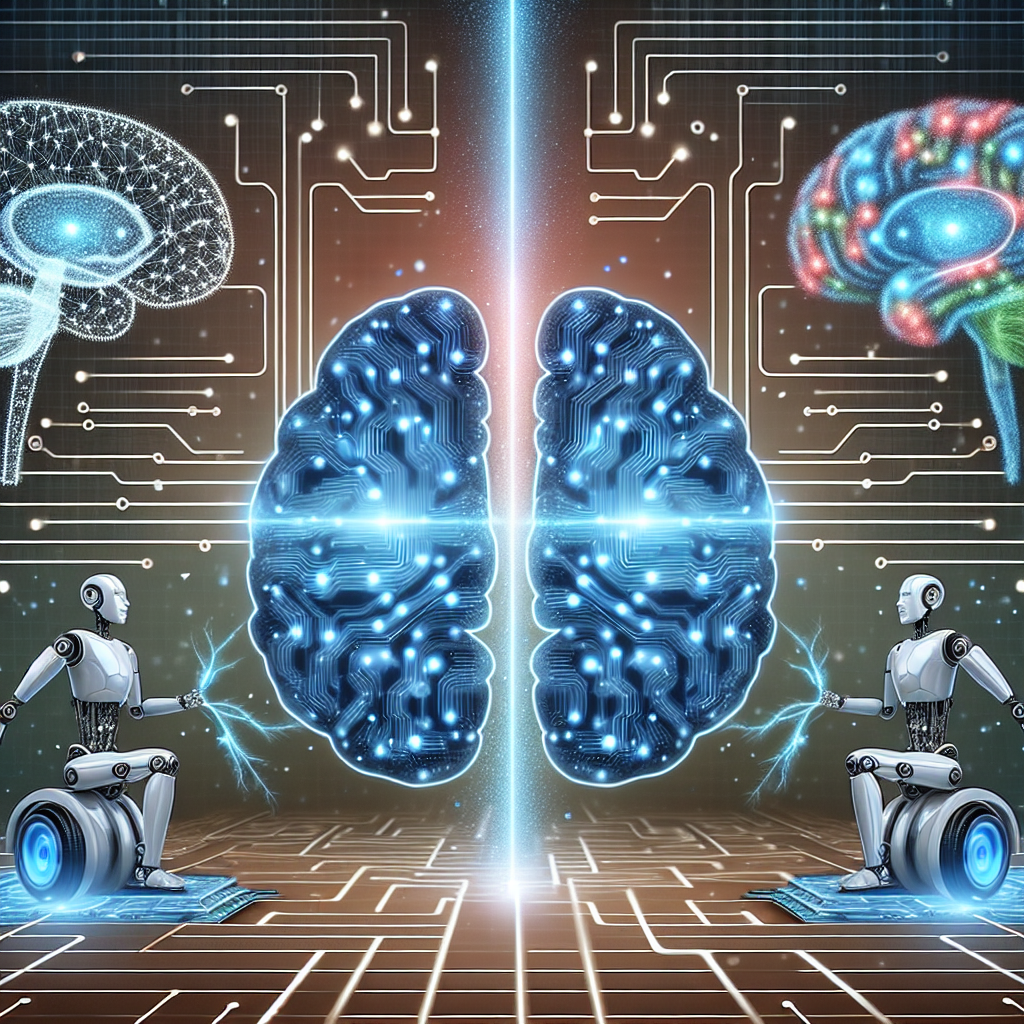The Intersection of AI and Neuroscience
Artificial intelligence (AI) and neuroscience are two fields that have traditionally been seen as separate entities. However, in recent years, there has been a growing interest in the intersection of these two disciplines. This intersection has the potential to revolutionize the way we understand and interact with both artificial and biological intelligence.
Neuroscience is the study of the nervous system, including the brain, spinal cord, and peripheral nerves. It seeks to understand how the nervous system functions and how it gives rise to complex behaviors and cognitive processes. AI, on the other hand, is the field of computer science that seeks to create machines that can perform tasks that typically require human intelligence, such as speech recognition, decision-making, and problem-solving.
The intersection of AI and neuroscience is a natural one, as both fields are concerned with understanding how intelligence arises and how it can be replicated or enhanced. By studying the brain and its neural networks, neuroscientists can gain insights into how intelligence is implemented in biological systems. These insights can then be used to inform the development of AI algorithms and models.
One area where the intersection of AI and neuroscience has been particularly fruitful is in the field of brain-computer interfaces (BCIs). BCIs are devices that allow individuals to control external devices using their brain activity. These devices can be used to help individuals with disabilities communicate, move, or interact with their environments. By studying how the brain processes information and generates signals, neuroscientists and AI researchers can develop more sophisticated BCIs that can be used for a wider range of applications.
Another area where AI and neuroscience are intersecting is in the development of neural networks. Neural networks are computational models inspired by the structure and function of the brain. By simulating the behavior of biological neurons, neural networks can perform tasks such as image recognition, natural language processing, and predictive modeling. Neuroscientists are interested in studying neural networks to gain insights into how the brain processes information and learns new tasks. AI researchers, in turn, are using these insights to improve the performance of neural networks and develop more efficient and powerful AI algorithms.
One of the key challenges in the intersection of AI and neuroscience is the complexity of the human brain. The brain is a highly complex and dynamic system that is still not fully understood. By studying the brain and its neural networks, neuroscientists hope to uncover the underlying principles of intelligence and consciousness. AI researchers can then use this knowledge to develop more sophisticated AI systems that can better mimic human intelligence.
In addition to BCIs and neural networks, the intersection of AI and neuroscience is also being applied to other areas such as neuroimaging, cognitive modeling, and computational neuroscience. Neuroimaging techniques such as fMRI and EEG are being used to study brain activity and connectivity, providing valuable insights into how the brain processes information and generates behavior. Cognitive modeling is being used to develop computational models of human cognition, helping researchers understand how the brain represents and processes information. Computational neuroscience is using AI techniques to simulate the behavior of neural networks and study how they give rise to complex behaviors.
Overall, the intersection of AI and neuroscience holds great promise for advancing our understanding of intelligence and consciousness. By studying the brain and its neural networks, researchers can gain insights into how intelligence arises in biological systems. These insights can then be used to develop more sophisticated AI algorithms and models that can better mimic human intelligence. In the future, this could lead to the development of AI systems that are more powerful, flexible, and adaptive, ultimately blurring the lines between artificial and biological intelligence.
FAQs
Q: How is AI being used in neuroscience?
A: AI is being used in neuroscience to analyze large datasets of brain activity, develop computational models of neural networks, and simulate the behavior of biological neurons. AI techniques such as machine learning and deep learning are being used to uncover patterns in brain activity and connectivity, helping researchers understand how the brain processes information and generates behavior.
Q: How is neuroscience being used in AI?
A: Neuroscience is being used in AI to gain insights into how intelligence arises in biological systems. By studying the brain and its neural networks, researchers can develop more sophisticated AI algorithms and models that can better mimic human intelligence. These insights can be used to improve the performance of neural networks, develop more efficient AI systems, and advance our understanding of intelligence and consciousness.
Q: What are some potential applications of the intersection of AI and neuroscience?
A: Some potential applications of the intersection of AI and neuroscience include the development of more sophisticated brain-computer interfaces, the improvement of neural networks for tasks such as image recognition and natural language processing, and the study of intelligence and consciousness. By combining insights from neuroscience with AI techniques, researchers can develop more powerful and adaptive AI systems that can better mimic human intelligence.
Q: What are some challenges in the intersection of AI and neuroscience?
A: Some challenges in the intersection of AI and neuroscience include the complexity of the human brain, the lack of understanding of how intelligence arises in biological systems, and the limitations of current AI algorithms and models. By addressing these challenges, researchers hope to develop more sophisticated AI systems that can better mimic human intelligence and advance our understanding of the brain and its neural networks.

